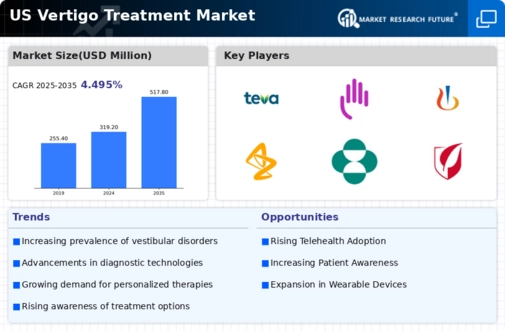The competitive insights of the US Vertigo Treatment Market reveal a dynamic landscape characterized by a growing demand for effective therapies to manage various forms of vertigo. The market is shaped by the rising prevalence of vestibular disorders and an increasing awareness of treatment options among healthcare providers and patients. Innovative therapeutics, combined with advancements in diagnostic techniques, are crucial in addressing the diverse needs of patients experiencing symptoms associated with vertigo.
Key to this competitive environment is the constant evolution of product offerings, coupled with strategic collaborations and partnerships aimed at expanding market reach and enhancing treatment efficacy. The focus on developing personalized treatment plans tailored to individual patient profiles further intensifies the competitive dynamics within this market segment.
Teva Pharmaceutical Industries holds a significant position in the US Vertigo Treatment Market, leveraging its extensive portfolio of generic and specialty pharmaceuticals. The company's strengths lie in its broad distribution network, established relationships with healthcare providers, and a dedication to research and development aimed at improving therapeutic options for vertigo.
Teva's commitment to providing high-quality, cost-effective medications positions it favorably against competitors while meeting the needs of patients and payers alike. Additionally, its robust pipeline ensures that Teva remains at the forefront of emerging treatments, illustrating its responsiveness to market changes and advancements in medical science.
Bristol Myers Squibb complements the US Vertigo Treatment Market through its innovative approach and a strong focus on research-driven solutions. The company excels in developing key pharmaceuticals that cater to various health conditions, including those that contribute to vertigo symptoms.
Bristol Myers Squibb's market presence is bolstered by its strategic positioning in the biopharmaceutical sector, alongside its commitment to advancing clinical programs through mergers and acquisitions that enhance its product portfolio. The company's strengths include a robust pipeline of investigational drugs, a focus on targeted therapies, and an established reputation for product efficacy and safety, which collectively strengthen its foothold in the vertigo treatment arena. With a dedicated effort to remain responsive to patient needs, Bristol Myers Squibb continues to innovate and adapt in this competitive landscape.





















